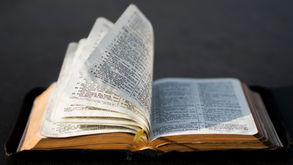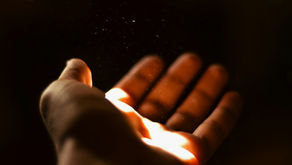Response in the twentieth century
- Uplifting Words

- Dec 7, 2019
- 4 min read
BY ROBERT WEINBERG
The Báb and His followers were thus a source of curiosity and inspiration to many writers, intrigued by His teachings and captivated by the heartbreak of their story. Later, as the Heroic Age of Bahá’í history came to an end with the passing of ‘Abdu’l-Bahá in 1921, the Bahá’í Faith, under the direction of its Guardian, Shoghi Effendi, began to evolve into a distinct and independent, world-embracing religion, spreading to an ever-increasing number of territories. One of the reasons for Shoghi Effendi’s translation of The Dawn-Breakers: Nabíl’s Narrative of the Early Days of the Bahá’í Revelation was to give newer Bahá’ís in the West both a vivid introduction to the origins of their Faith, much of which was unknown to them, and an inspirational tool to encourage their own sacrificial services in the Faith’s progress. It was also the Guardian’s hope that The Dawn-Breakers would provide artists with source material for their work: It is surely true that the spirit of these heroic souls will stir many artists to produce their best. It is such lives that in the past inspired poets and moved the brush of the painters.
In comparison to the outpouring of those early decades of literary responses to the Báb, general works inspired by the Bábí period may have dwindled for much of the 20th century. However, following the publication of The Dawn-Breakers up until today, Bahá’ís themselves have paid homage to the Báb and the heroes of Bábí history through countless works of art, poetry, theater, film, and music, in a wide range of languages and forms of cultural expression. Two American Bahá’ís who received widespread public acclaim in the pursuit of their art and deserve brief mention here, to exemplify how The Dawn-Breakers has impacted upon creative practitioners, are the painter Mark Tobey and the poet Robert Hayden.


When Tobey was on his second pilgrimage to the Holy Land in 1935, Shoghi Effendi told him that he was free to depict the early heroes of the Faith but not its Founders. Up until that time, some of the early western Bahá’ís who were painters had not attempted to illustrate any events from Bábí history, let alone attempt to convey more mystical concepts. Tobey, however, conversant with the moves toward abstraction in modernist European painting, found that his emerging visual language could be deployed not only for evoking historical events but also metaphysical ideas.

One of Tobey’s most explicit Bábí-inspired works is Movement Around a Martyr (1938). In it, he draws on his deep knowledge of renaissance art, especially the pietà figure of the martyred Christ, to depict the physical and spiritual forces that circle about a saintly figure who has been put to death. The entire image, which from a distance might be read as an all-seeing eye or maelstrom, spirals out of a small central circle, perhaps the Primal Point, as the Báb described Himself, from which has been generated all created things. Swirling around the martyred figure, one lifeless arm hanging down, are mourners and worshippers, priests and helmeted guards, while more amorphous angelic figures circle above. In this work, Tobey draws an explicit parallel between the Bábí episode and the archetypal events from previous religious dispensations.
Meanwhile, in his poem, Dawnbreaker, the distinguished American poet Robert Hayden, who served from 1976 to 1978 as Consultant in Poetry to the U.S. Library of Congress, a role today known as U.S. Poet Laureate, takes as his inspiration the description of the humiliation of Hájí Sulaymán Khán, whose final punishment was to have holes gouged into his flesh into which were inserted burning candles:
Ablaze
with candles sconced
in weeping eyes
of wounds,
He danced
through jeering streets
to death; oh sang
against
The drumming
mockery God’s praise.
Flames nested in
his flesh
Fed the fires that consume us now, the fire that will save.
A continuing story
There are two aspects to the story of the Báb—His captivating personal demeanor and the harsh treatment of His followers—that particularly seem to have sparked the imagination of writers and then later, artists. The English divine Thomas K. Cheyne recorded that the Báb’s combination of mildness and power is so rare that we have to place him in a line with super-normal men …. Curzon noted, that "[t]ales of magnificent heroism illumine the bloodstained pages of Bábí history …. Of no small account, then, must be the tenets of a creed that can awaken in its followers so rare and beautiful a spirit of self-sacrifice."
To this day, the Báb continues to fascinate not only Bahá’ís around the world, but scholars of history and religion, artists, musicians, writers and dramatists. Anticipating the worldwide celebrations of both the bicentenaries of Bahá’u’lláh in 2017 and the Báb in 2019, the Universal House of Justice wrote:
At the heart of these festivities must be a concerted effort to convey a sense of what it means for humanity that these two Luminaries rose successively above the horizon of the world. Of course, this will take different forms in different contexts, extending to a myriad artistic and cultural expressions, including songs, audio-visual presentations, publications and books.
The bicentenary of the Birth of the Báb in October 2019 did indeed give rise to an outpouring of artistic expressions from people on every continent, a sure reminder of the profound influence that the life and mission of the Báb is continuing to have, and will increasingly exert, on artistic expression worldwide.
Much then is still to be seen and heard, drawn and painted, spoken and sung, acted upon the stage, or captured on film—as humanity increasingly responds to the advent of a Divine Revelation and its martyred Prophet-Herald, Who fascinated contemporary commentators in the middle of the nineteenth century, and Who continues to speak to hearts and minds in the twenty-first.
Copyright © Bahá'í International Community




















